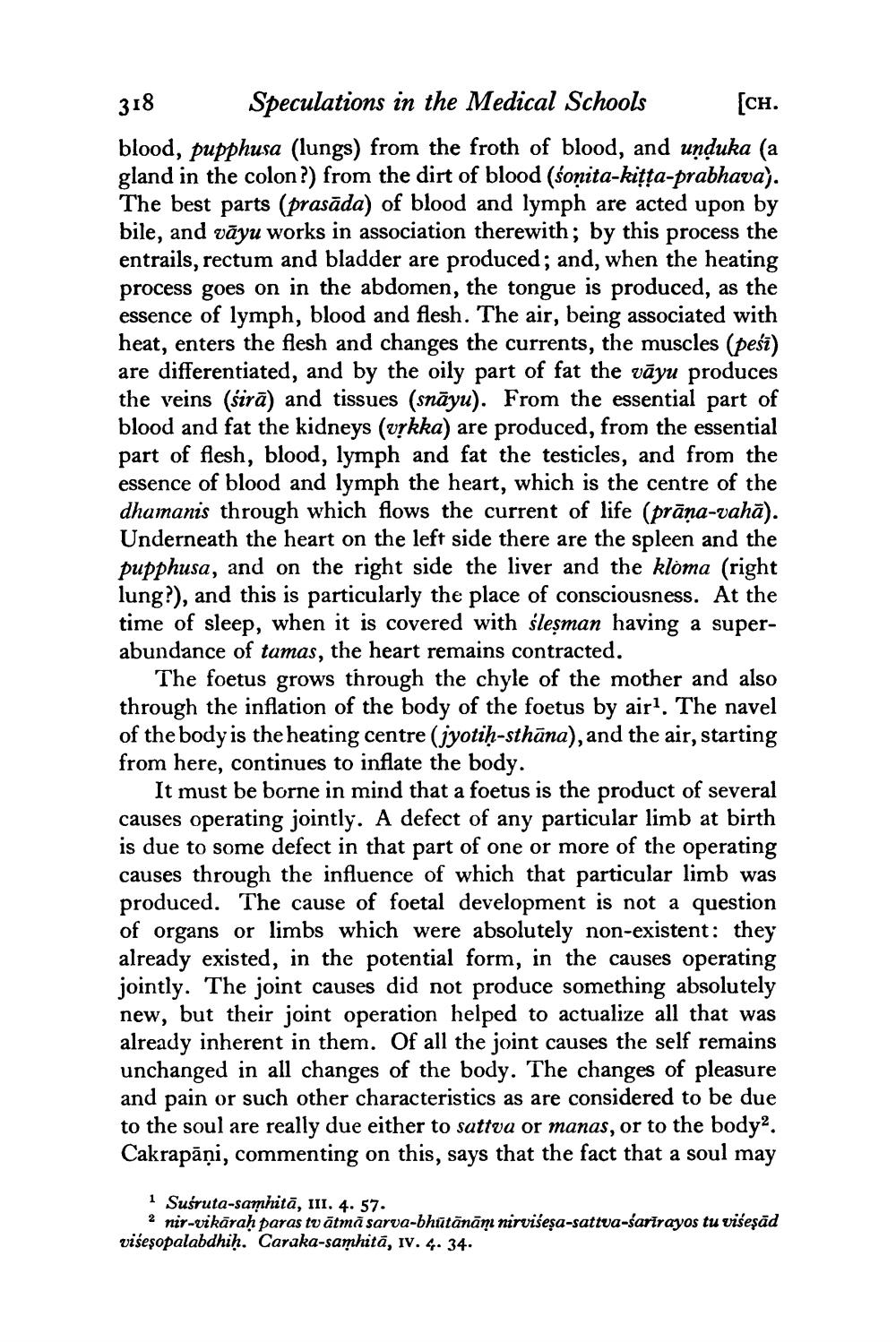________________
318
Speculations in the Medical Schools
[CH.
blood, pupphusa (lungs) from the froth of blood, and uṇḍuka (a gland in the colon?) from the dirt of blood (sonita-kiṭṭa-prabhava). The best parts (prasāda) of blood and lymph are acted upon by bile, and vayu works in association therewith; by this process the entrails, rectum and bladder are produced; and, when the heating process goes on in the abdomen, the tongue is produced, as the essence of lymph, blood and flesh. The air, being associated with heat, enters the flesh and changes the currents, the muscles (pesi) are differentiated, and by the oily part of fat the vāyu produces the veins (sira) and tissues (snāyu). From the essential part of blood and fat the kidneys (vṛkka) are produced, from the essential part of flesh, blood, lymph and fat the testicles, and from the essence of blood and lymph the heart, which is the centre of the dhamanis through which flows the current of life (prāṇa-vahā). Underneath the heart on the left side there are the spleen and the pupphusa, and on the right side the liver and the kloma (right lung?), and this is particularly the place of consciousness. At the time of sleep, when it is covered with śleşman having a superabundance of tamas, the heart remains contracted.
The foetus grows through the chyle of the mother and also through the inflation of the body of the foetus by air1. The navel of the body is the heating centre (jyotiḥ-sthāna), and the air, starting from here, continues to inflate the body.
It must be borne in mind that a foetus is the product of several causes operating jointly. A defect of any particular limb at birth is due to some defect in that part of one or more of the operating causes through the influence of which that particular limb was produced. The cause of foetal development is not a question of organs or limbs which were absolutely non-existent: they already existed, in the potential form, in the causes operating jointly. The joint causes did not produce something absolutely new, but their joint operation helped to actualize all that was already inherent in them. Of all the joint causes the self remains unchanged in all changes of the body. The changes of pleasure and pain or such other characteristics as are considered to be due to the soul are really due either to sattva or manas, or to the body2. Cakrapāņi, commenting on this, says that the fact that a soul may
1 Suśruta-samhita, III. 4. 57.
2 nir-vikāraḥ paras tv ātmā sarva-bhūtānām nirviseșa-sattva-śarīrayos tu viseşād viseşopalabdhiḥ. Caraka-samhita, IV. 4. 34.




